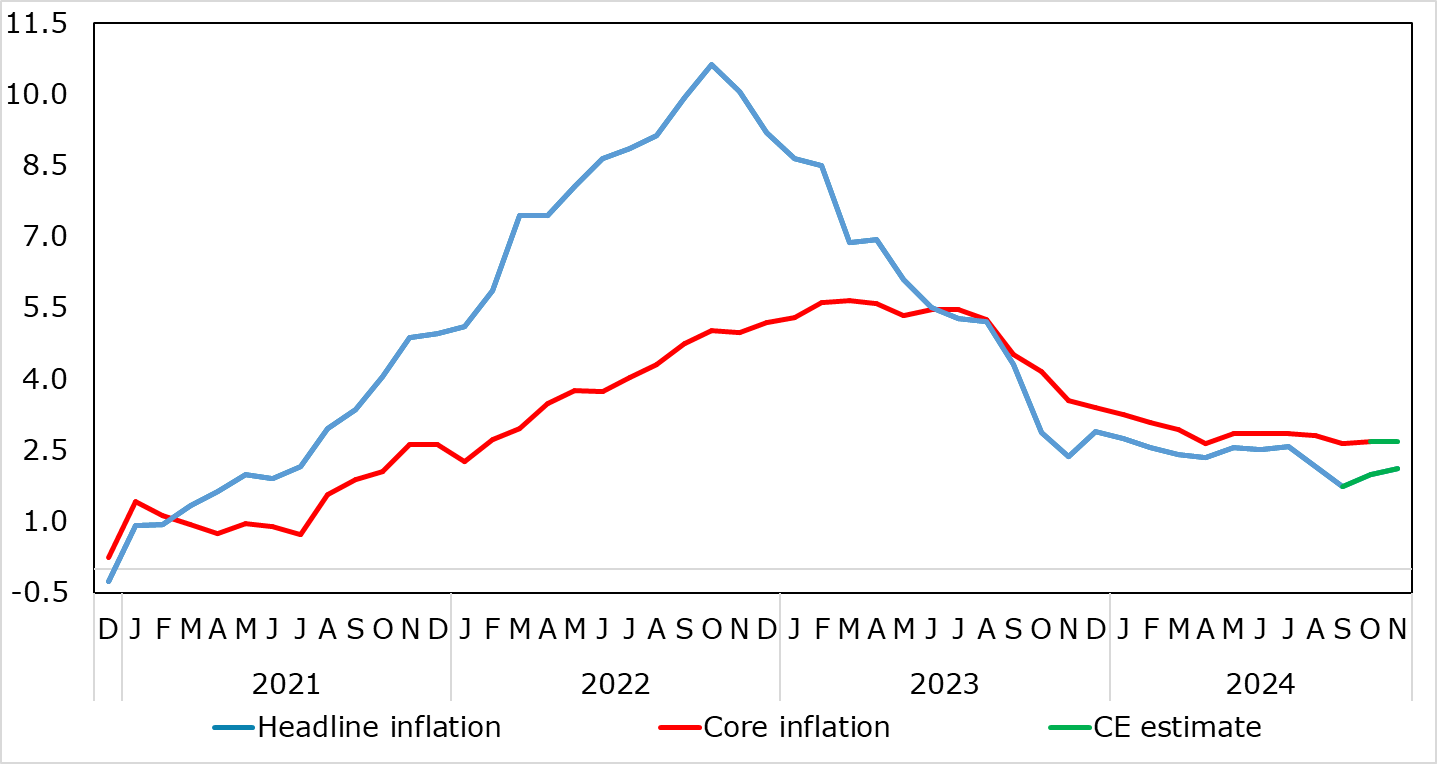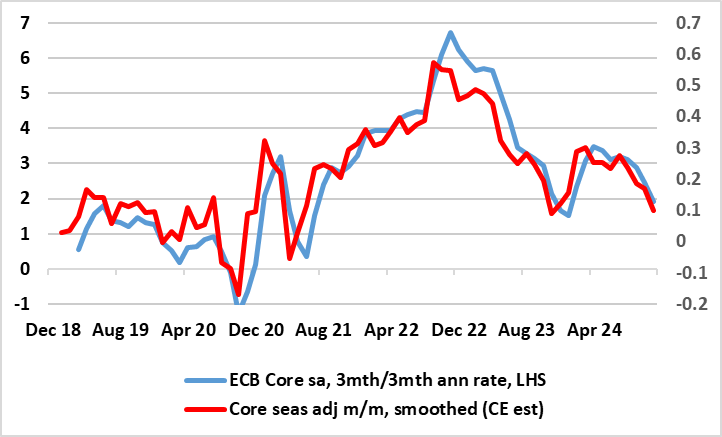EZ HICP Preview (Nov 29): Headline Higher, But Core Messages Still Friendly?
Slightly higher energy costs were the main factor behind the rise back in HICP inflation in October to 2.0% having fallen to a well-below target 1.7% in the previous month (Figure 1). The outcome was a little higher than expected, not least with another apparently resilient services inflation reading; it stayed at 3.9%, something that helped keep the core rate at 2.7% a six-month low. Regardless, shorter-term price momentum data already suggest that core inflation on this basis is running around target and given sharp, falls in wage tracker data, services inflation may succumb more clearly soon. Regardless the headline HICP rate may edge up a notch or two in November – most likely to 2.1%, but with the core staying put. Adverse energy base effects will be the cause, making it all the more important to look at shorter term price dynamics, (ie adjusted m/m data), which suggest on target core inflation even on the ECB’s preferred measure (Figure 2).
Figure 1: Headline Rises Back - Modestly

Source: Eurostat, CE
This backdrop has persuaded the recalcitrant ECB into a reassessment. In fact, the ECB has brought forward inflation hitting target durably now to be in the course of next year as opposed to late 2025 as suggested in the September projections. But amid tentative signs of consumer recovery and resilient services, it would be premature to expect anything more than 25 bp at the December Council meeting, that is unless forthcoming survey data suggest even more clearly downside risk to growth that may also be materialising. However, the question arising is if the ECB flags faster easing into 2025.
Indeed, it seems that worries about weaker growth are reverberating more discernibly within the ECB. Moreover, the worries are twofold. Clearly, weaker growth risks possible (added) downside risks to inflation, with BoI Governor Panetta earlier this week warning that restrictive monetary conditions are no longer necessary given the risk of inflation falling well below target. But the ECB is now also flagging elevated financial stability vulnerabilities according to its just-released Financial Stability Review (FSR). It notes risks to economic growth that have shifted to the downside and where growth fears have resurfaced as a key source of uncertainty particularly to firms where debt servicing is possibly more of an issue. All of which chimes with our long-standing concern of downside risks that may be materialising to what we still see is a below-consensus growth outlook. It could be argued therefore that ECB easing is needed not only to minimise downside inflation risks but also help repair debt servicing capacity and persuade households to run down elevated savings!
In this regard, for us, and seemingly now the ECB, recent survey data, rather than just inflation, may be increasingly influential. Such data are pointing not only to more real economy weakness but also to significant falls in cost and output price pressures and retailers price expectations. These considerations are all the more important as the ECB hierarchy has made clear policy will be shaped by an array of data rather than any particular data points. Indeed, this survey weakness remains the main reason we expect a further 75 bp of cuts by next summer after whatever December delivers.
Figure 2: Core Inflation Around Target Too?

Source: Eurostat, European Commission